-
 Bitcoin
Bitcoin $116900
0.00% -
 Ethereum
Ethereum $4280
5.48% -
 XRP
XRP $3.265
-1.45% -
 Tether USDt
Tether USDt $1.000
-0.01% -
 BNB
BNB $807.0
1.41% -
 Solana
Solana $183.1
2.93% -
 USDC
USDC $0.9999
0.00% -
 Dogecoin
Dogecoin $0.2440
6.50% -
 TRON
TRON $0.3357
-0.88% -
 Cardano
Cardano $0.8178
2.63% -
 Hyperliquid
Hyperliquid $44.13
7.45% -
 Chainlink
Chainlink $21.39
9.09% -
 Stellar
Stellar $0.4524
-0.84% -
 Sui
Sui $3.957
2.13% -
 Bitcoin Cash
Bitcoin Cash $572.7
-2.54% -
 Hedera
Hedera $0.2671
1.54% -
 Avalanche
Avalanche $24.77
4.17% -
 Ethena USDe
Ethena USDe $1.001
0.02% -
 Litecoin
Litecoin $122.3
-1.94% -
 Toncoin
Toncoin $3.432
2.26% -
 UNUS SED LEO
UNUS SED LEO $9.007
0.49% -
 Shiba Inu
Shiba Inu $0.00001396
5.26% -
 Uniswap
Uniswap $11.09
1.64% -
 Polkadot
Polkadot $4.155
4.57% -
 Dai
Dai $1.000
0.00% -
 Pepe
Pepe $0.00001253
5.11% -
 Cronos
Cronos $0.1588
2.67% -
 Bitget Token
Bitget Token $4.512
0.05% -
 Monero
Monero $275.0
0.64% -
 Ethena
Ethena $0.7527
15.10%
How is the reserve of USDT managed?
USDT reserves, primarily commercial paper & US Treasury bills, are managed to maintain a 1:1 USD peg, though their composition and full auditability remain controversial, impacting market confidence.
Mar 14, 2025 at 11:11 am

Key Points:
- USDT reserves are primarily held in commercial paper, short-term US Treasury bills, and other highly liquid assets. The exact composition fluctuates based on market conditions and Tether's risk management strategies.
- Tether's reserve management practices have been a subject of intense scrutiny and controversy, leading to audits and investigations.
- Transparency regarding the composition and valuation of the reserves is crucial for maintaining user confidence and the stability of the USDT peg to the US dollar.
- Understanding the intricacies of USDT's reserve management is critical for navigating the complexities of the stablecoin market.
- Various methodologies are employed to ensure the reserves can consistently cover outstanding USDT in circulation.
How is the reserve of USDT managed?
Tether (USDT), the largest stablecoin by market capitalization, claims to maintain a 1:1 backing with the US dollar. This means for every USDT in circulation, there should be a corresponding US dollar (or equivalent assets) held in reserve. However, the precise management of these reserves is a complex and frequently debated topic. Tether publishes regular attestations detailing the composition of its reserves. These attestations aim to provide transparency, but their scope and methodology have been questioned by critics.
The reserves themselves are not held in a single, monolithic account. Instead, they are diversified across a range of assets, primarily focused on maintaining liquidity and minimizing risk. A significant portion of the reserves are typically invested in short-term, highly liquid instruments. These can include commercial paper, which represents short-term debt issued by corporations. While generally considered low-risk, commercial paper does carry inherent credit risk, a factor that has been a point of concern in past controversies surrounding Tether.
A further portion of the reserves is invested in US Treasury bills, considered one of the safest and most liquid assets globally. These short-term government bonds offer a degree of stability and security. The proportion of Treasury bills versus commercial paper in the reserve fluctuates based on Tether's risk assessment and prevailing market conditions. The goal is to balance risk and return, seeking to maximize the yield while maintaining sufficient liquidity to meet redemption demands.
Other assets might also be included in the reserve composition, depending on Tether's investment strategy. These could include certificates of deposit (CDs), repurchase agreements (repos), and other highly liquid investments. The specific allocation to each asset class is not always publicly disclosed in full detail, fueling ongoing debate and skepticism within the cryptocurrency community. The lack of complete transparency often leads to questions about the true composition and valuation of the reserves.
Tether's reserve management involves continuous monitoring and adjustments. Market conditions, regulatory changes, and redemption demands all influence the allocation of assets within the reserve. The firm employs a team of financial professionals responsible for managing the risks associated with these investments. This involves sophisticated risk models and hedging strategies aimed at mitigating potential losses and maintaining the stability of the USDT peg.
The auditing process surrounding Tether's reserves has been a significant source of controversy. While Tether has published attestations from various firms, these have not always satisfied the demands for a full, independent audit by a major accounting firm. The lack of a complete audit has fueled concerns about the accuracy and reliability of the reported reserve composition and its ability to fully cover outstanding USDT.
This lack of complete transparency has implications for the broader cryptocurrency market. USDT's stability is crucial for many trading activities and decentralized finance (DeFi) applications. Any perceived weakness or lack of trust in Tether's reserve management can trigger significant market volatility and potentially impact the price of other cryptocurrencies.
Frequently Asked Questions:
Q: What is the primary asset held in USDT reserves?
A: While the exact composition changes, a significant portion of USDT reserves historically has been held in commercial paper and short-term US Treasury bills. The proportions of each asset class fluctuate based on risk assessment and market conditions.
Q: Are USDT reserves fully auditable?
A: No, Tether has not yet undergone a full, independent audit by a major accounting firm, which remains a source of ongoing criticism and uncertainty within the cryptocurrency community. The attestations provided have been subject to debate regarding their scope and completeness.
Q: What is the risk associated with holding commercial paper in USDT reserves?
A: Commercial paper carries credit risk, meaning the issuer might default on their obligation to repay. While generally considered low-risk, particularly for short-term instruments, it’s still a risk factor. The potential for defaults is a significant point of concern regarding Tether's reserve management.
Q: How does Tether maintain the 1:1 peg with the US dollar?
A: Tether aims to maintain the peg through a combination of reserve management strategies, including diversification of assets, and active market intervention to buy or sell USDT as needed to stabilize its price. The effectiveness of these methods is subject to ongoing scrutiny.
Q: What happens if Tether cannot meet redemption demands?
A: If Tether is unable to meet redemption demands for USDT, it could lead to a loss of confidence in the stablecoin, potentially causing a significant de-pegging from the US dollar and potentially causing widespread market disruption within the cryptocurrency ecosystem. The consequences could be substantial and far-reaching.
Disclaimer:info@kdj.com
The information provided is not trading advice. kdj.com does not assume any responsibility for any investments made based on the information provided in this article. Cryptocurrencies are highly volatile and it is highly recommended that you invest with caution after thorough research!
If you believe that the content used on this website infringes your copyright, please contact us immediately (info@kdj.com) and we will delete it promptly.
- Shiba Inu, Pepe, and Remittix: A Tale of Memes, Hype, and Real-World Utility
- 2025-08-10 08:30:12
- Ethereum Price, ETH Tokens, Rally Prediction: Is a New All-Time High In Sight?
- 2025-08-10 08:30:12
- XRP, Elon Musk, and Wealth: A Crypto Conundrum
- 2025-08-10 08:50:12
- Retire Early with Crypto: High-Conviction Plays Beyond Bitcoin
- 2025-08-10 08:50:12
- BlockDAG, Render, and Polkadot: Charting the Course for Long-Term Crypto Dominance
- 2025-08-10 08:55:21
- Toncoin's Ascent: Price Predictions and the VERB Strategy Impact
- 2025-08-10 08:55:21
Related knowledge
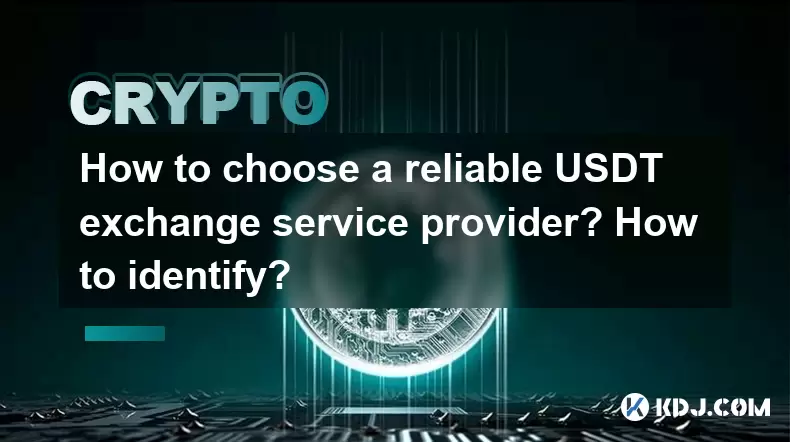
How to choose a reliable USDT exchange service provider? How to identify?
Jun 12,2025 at 03:15pm
Understanding the Role of USDT in Cryptocurrency TradingUSDT (Tether) is one of the most widely used stablecoins in the cryptocurrency market. It is d...
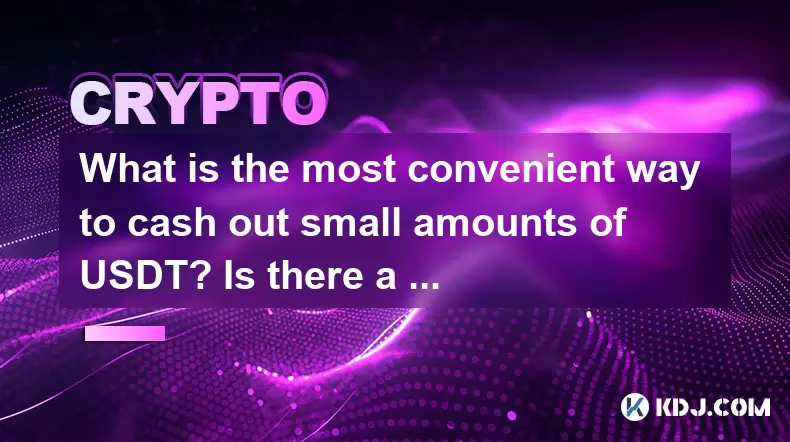
What is the most convenient way to cash out small amounts of USDT? Is there a shortcut?
Jun 11,2025 at 11:00pm
Understanding the Need to Cash Out Small USDT AmountsCashing out small amounts of USDT can be a challenge for many crypto users. Traditional methods o...
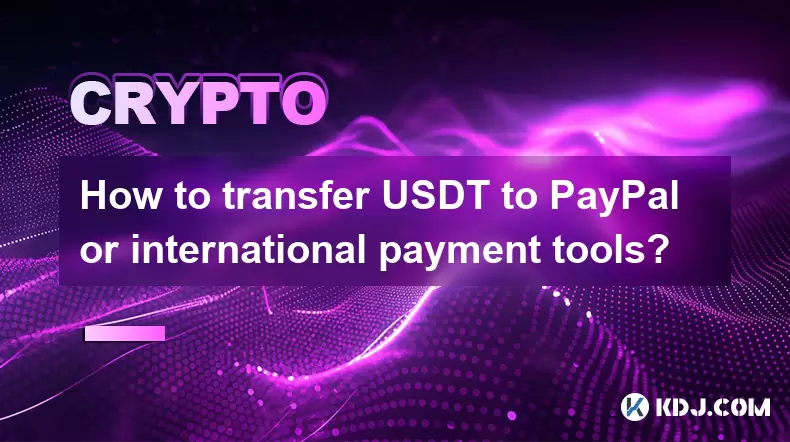
How to transfer USDT to PayPal or international payment tools?
Jun 15,2025 at 05:28am
Understanding the Basics of USDT and PayPal IntegrationUSDT (Tether) is a stablecoin pegged to the US dollar, offering blockchain-based value transfer...
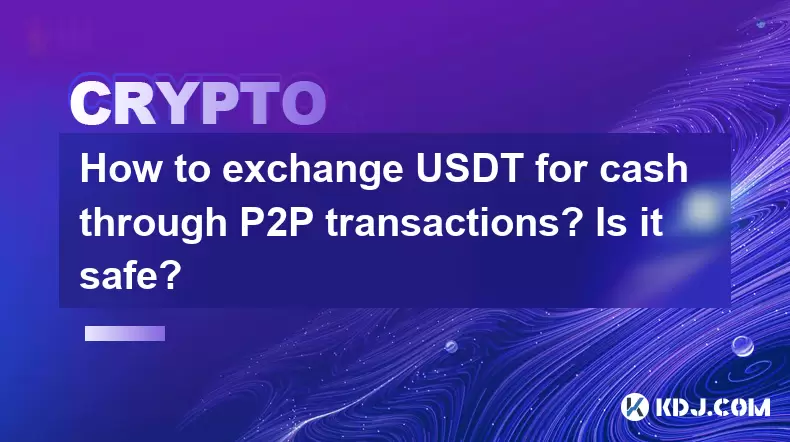
How to exchange USDT for cash through P2P transactions? Is it safe?
Jun 18,2025 at 07:56am
Understanding USDT and P2P TransactionsTether (USDT) is a stablecoin pegged to the value of the US dollar, making it a popular choice for users who wa...
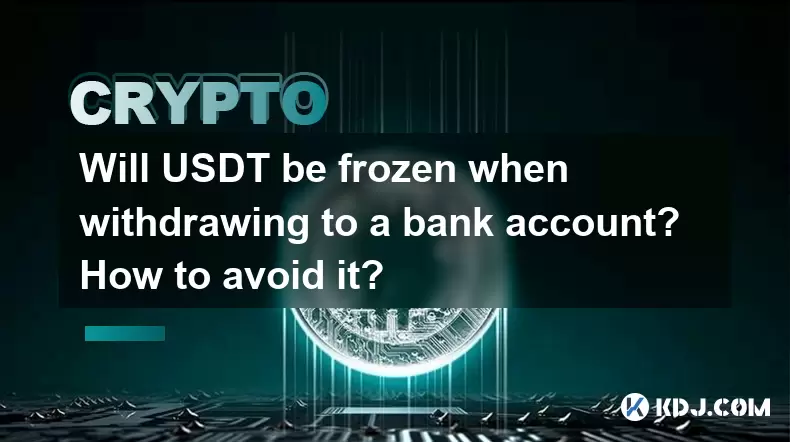
Will USDT be frozen when withdrawing to a bank account? How to avoid it?
Jun 15,2025 at 10:03am
Understanding USDT Withdrawals and Bank Account Freezing RisksWhen users decide to withdraw USDT (Tether) to a bank account, one of the most common co...
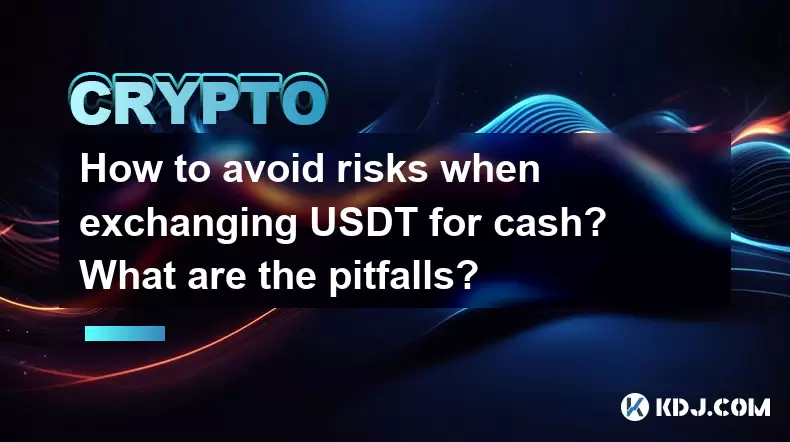
How to avoid risks when exchanging USDT for cash? What are the pitfalls?
Jun 11,2025 at 08:14pm
Understanding the Risks of Exchanging USDT for CashWhen exchanging USDT (Tether) for cash, users must be aware of the potential risks involved. As a s...

How to choose a reliable USDT exchange service provider? How to identify?
Jun 12,2025 at 03:15pm
Understanding the Role of USDT in Cryptocurrency TradingUSDT (Tether) is one of the most widely used stablecoins in the cryptocurrency market. It is d...

What is the most convenient way to cash out small amounts of USDT? Is there a shortcut?
Jun 11,2025 at 11:00pm
Understanding the Need to Cash Out Small USDT AmountsCashing out small amounts of USDT can be a challenge for many crypto users. Traditional methods o...

How to transfer USDT to PayPal or international payment tools?
Jun 15,2025 at 05:28am
Understanding the Basics of USDT and PayPal IntegrationUSDT (Tether) is a stablecoin pegged to the US dollar, offering blockchain-based value transfer...

How to exchange USDT for cash through P2P transactions? Is it safe?
Jun 18,2025 at 07:56am
Understanding USDT and P2P TransactionsTether (USDT) is a stablecoin pegged to the value of the US dollar, making it a popular choice for users who wa...

Will USDT be frozen when withdrawing to a bank account? How to avoid it?
Jun 15,2025 at 10:03am
Understanding USDT Withdrawals and Bank Account Freezing RisksWhen users decide to withdraw USDT (Tether) to a bank account, one of the most common co...

How to avoid risks when exchanging USDT for cash? What are the pitfalls?
Jun 11,2025 at 08:14pm
Understanding the Risks of Exchanging USDT for CashWhen exchanging USDT (Tether) for cash, users must be aware of the potential risks involved. As a s...
See all articles

























































































